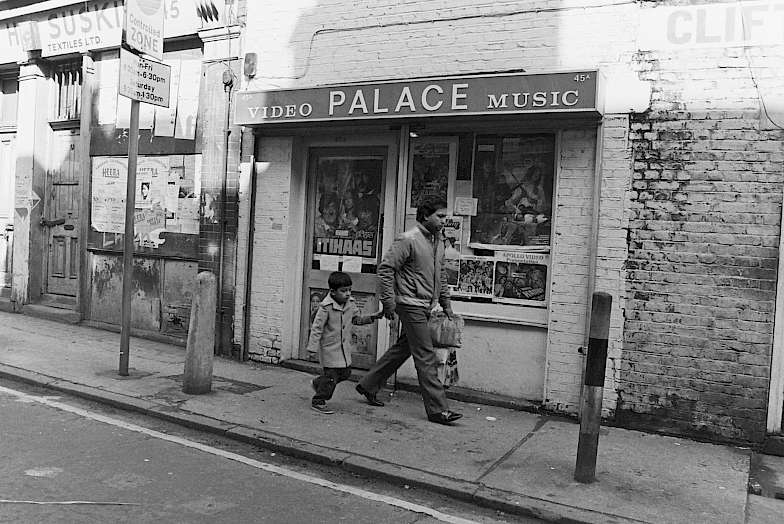Although migration to the East End from Bengal, and Sylhet in particular, dates back to the seventeenth century, the largest numbers of Bengalis arrived in the area in the late 1950s and early 1960s, in the aftermath of India’s independence and partition.
The retreat of the British from India led to two violent partitions of the subcontinent. In 1947, upon independence from British rule, India was carved into two nation states – India and Pakistan. The eastern districts of the province of Bengal became part of newly independent Pakistan, while the western districts became part of independent India. In 1971 after a bloody civil war in Pakistan, East Pakistan became the sovereign nation of Bangladesh.
In the period after the 1947 partition, over 20 million people migrated, or were displaced, with about 2% relocating overseas – most notably to the Middle East and Britain. For Sylhetis, the 1947 partition meant that traditional streams of labour migration had been cut off. Assam, where many Sylhetis had laboured on British tea plantations, became part of independent India. The port city of Calcutta, where Sylheti seafarers had traditionally found work on British ships, became part of independent India too, leaving Sylhetis with no access to seafaring employment. As a result, many young Sylheti men sought work in Britain, where cheap ‘unskilled’ labour was in demand. The British Nationality Act of 1948 recognised citizens of all Commonwealth countries, including newly independent India and Pakistan, as British subjects and gave them continued rights to freely enter, settle in and work in Britain. It is estimated that by 1951, there were around 2,000 Bengalis in Britain, rising to 6,000 by 1961.
With the passage of Britain’s Commonwealth Immigrants Act in 1962, migration to Britain for Commonwealth citizens was made more difficult. After 1962, Commonwealth citizens from India and Pakistan were only allowed to enter Britain if they were in possession of an employment voucher issued by the Ministry of Labour in London prior to arrival. While the Act stemmed primary immigration from India and Pakistan, it preserved the right of entry for wives, and children under the age of 16, of Commonwealth citizens already in Britain.
In 1971, just before the independence of Bangladesh, there were around 22,000 Bengalis in Britain. The 1981 census records around 65,000 Bangladeshis, which included 16,000 'second generation' Bangladeshis born and brought up in Britain. By 1987, only six years later, the Labour Force Survey counted 116,000 Bangladeshis, just over half of whom were born in Bangladesh.
This dramatic rise in numbers was driven largely by hardship and insecurity in Bangladesh in the decade after war and independence. The movement for Bangladeshi independence was sparked by the dissatisfaction among Bengalis in East Pakistan with the government based in West Pakistan. Bengalis felt that their province was being economically exploited by the Pakistani government and resented the marginalisation of the Bengali language when Urdu was established as the official language of Pakistan. Pakistan’s Awami League, a nationalist, secularist and social democratic party, demanded autonomy for East Pakistan. In December 1971, when East Pakistan declared its independence as the state of Bangladesh, a violent civil war broke out. The war of liberation cost millions of lives and created 10 million refugees.
Post-1970 immigration from Bangladesh to Britain was driven not only by political instability in Bangladesh itself, but also by the increasingly harsh immigration laws in Britain in 1968 and 1971. These laws effectively stopped circular migration between Britain and Bangladesh and underpinned the process of family reunification, whereby Bengali men already living and working in Britain sent for their wives and children to join them. This period marked the formation of a larger, more permanent, settled community of Bangladeshis in Britain.
Recalling what life in Brick Lane was like for new arrivals in the 1970s, one local Bengali restaurant owner said:
‘Brick Lane provided all the shops and everything for the Asian community. It was never a touristy street; it was basically where you could go and get your videos, if you wanted to watch video films, buy sari, the spices. This was the road for Bengalis. And you've got to remember – the Bengalis came to it because it was basically an inner-city dump. And it was cheap and everything. It wasn't like the way it is now. It was probably some of the cheapest bits of London, because it was so rundown. You know, when Bengalis come over, they didn't have a lot of money, and so these houses were perfect for people to start living here.’




